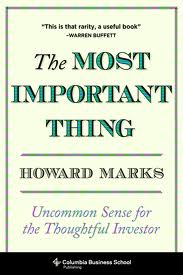Below are some wonderful bits on bubbles and portfolio construction from James Montier. Excerpts were extracted from a Feb 2014 interview with Montier by Robert Huebscher of Advisor Perspectives – a worthwhile read. Cash, Expected Returns, Exposure
“The issue is…everything is expensive right now. How do you build a portfolio that recognizes the fact that cash is generating negative returns…you have to recognize that this is the purgatory of low returns. This is the environment within which we operate. As much as we wish it could be different, the reality is it isn’t, so you have to build a portfolio up that tries to make sense. That means owning some equities where you think you’re getting at least some degree of reasonable compensation for owning them, and then basically trying to create a perfect dry-powder asset.
The perfect dry-powder asset would have three characteristics: it would give you liquidity, protect you against inflation and it might generate a little bit of return.
Right now, of course, there is nothing that generates all three of those characteristics. So you have to try and build one in a synthetic fashion, which means holding some cash for its liquidity benefits. It means owning something like TIPS, which are priced considerably more attractively than cash, to generate inflation protection. Then, you must think about the areas to add a little bit of value to generate an above-cash return: selected forms of credit or possibly equity-spread trades, but nothing too risky.”
Dry powder is generally associated with cash. But as Montier describes here, it is possible that in certain scenarios cash is not the optimal dry-powder asset.
His description of creating a perfect dry-powder asset is akin to creating synthetic exposures, something usually reserved for large hedge funds / institutions and their counterparties.
Interestingly, anyone can (try to) create synthetic exposures by isolating characteristics of certain assets / securities to build a desired combination that behaves a certain way in XYZ environment, or if ABC happens.
For more on isolating and creating exposures, see our previous article on this topic.
Hedging, Fat Tail
“Bubble hunting can be overrated…I’m not sure it’s particularly helpful, in many regards…
Let’s take an equity‐market bubble, like the technology‐media‐telecom (TMT) bubble. Everyone now agrees I think, except maybe two academics, that TMT was actually a bubble. To some extent it didn’t really matter, because you had a valuation that was so extraordinarily high. You didn’t actually have to believe it was a bubble. You just knew you were going to get incredibly low returns from the fact that you were just massively overpaying for those assets.
Knowing it was a bubble as such helped reassure those of us who were arguing that it was a bubble, though we could see the more common signs of mania like massive issuance, IPOs and shifting valuation metrics that eventually were off the income statement altogether.
All of those things are good confirming evidence, but ultimately it didn’t matter because the valuation alone was enough to persuade you to think, ‘Hey, I’m just not going to get any returns in these assets even if it isn’t a bubble.’
Bubblehunting is much more useful when it is with respect to things like credit conditions and the kind of environments we saw in 2007, when it was far less obvious from valuation alone. Valuation was extended, but wasn’t anywhere near the kinds of levels that we saw in 2000. It was extended, but not cripplingly so by 2000 standards. But the ability to actually think about the credit bubble or the potential for a bubble in fundamentals or financial earnings is very useful.
The use of bubble methodology is certainly not to be underestimated, but people can get a little too hung up on it and start to see bubbles everywhere. You hear things about bond bubbles. Do I really care? All I need to know is bonds are going to give me a low return from here. Ultimately, for a buy-and-hold investor, the redemption yield minus expected inflation gives me my total return for bonds. There can’t be anything else in there.
You get the conclusion that, ‘Hey, I don’t really care if it’s a bubble or not.’ I suspect bubble hunting can be useful in some regards. But people use the term too loosely and it can lead to unhelpful assessments.”
Expected Return, Capital Preservation
“You can imagine two polar extreme outcomes: Central banks could end financial repression tomorrow. You would get real‐rate normalization and the only asset that survives unscathed is cash. Bonds suffer, equities suffer and pretty much everything else suffers. Or, the central banks keep their rates incredibly low for a very, very long period.
The portfolios you want to hold under those two different outcomes are extremely different. I have never yet met anyone with a crystal ball who can tell me which of these two outcomes is most likely – or even which one could actually happen. You’re left trying to build a portfolio that will survive both outcomes. It won’t do best under either one of the two outcomes or the most probable outcome, but it will survive. That really is the preeminent occupation of my mind at the moment.”
When To Buy, When To Sell, Psychology
“One of curses of value managers is we’re always too early both to buy and to sell. One of the ways that were trying to deal with that is to deliberately slow our behavior down, so we try to react at least to a moving average of the forecast rather than the spot forecasts.”
















